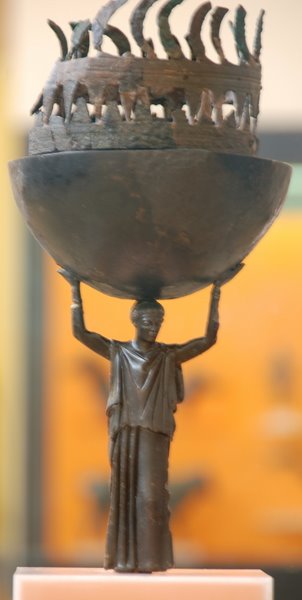
Today, The town of Delphi looks (to me) much like a Bavarian ski lodge, nestled high in the mountains of lower central Greece. It’s pretty slick. The architecture of the city doesn’t quite look like Greece.
The town has two major attractions: the ruins of ancient Delphi, and the Delphi Archaeological Museum (which houses many of the discoveries from ancient Delphi).
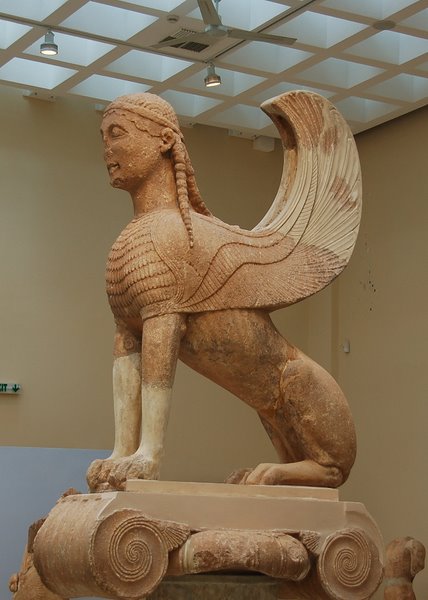 |
Next time I go to a museum, I’ll have to spend more time photographing the notes for the various items. This looks a lot like ancient Assyrian stuff.It’s called the Large Sphinx of Naxos, sitting on a 30′ Ionic column. ~ 560 B.C. Take a look at the ceiling fan above/behind it to get an idea for how big this thing is. The dark stone is original, while the light patches are recreations to fill in the gaps. |
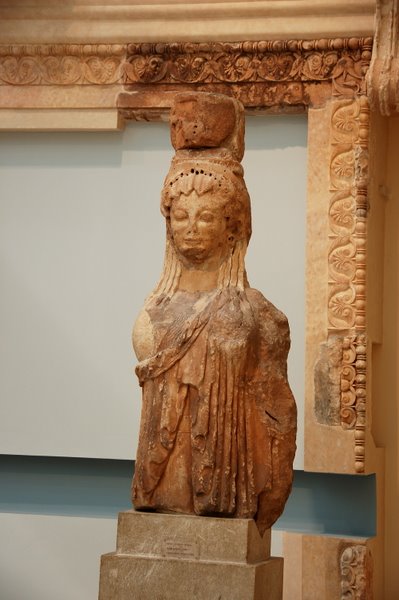 |
|
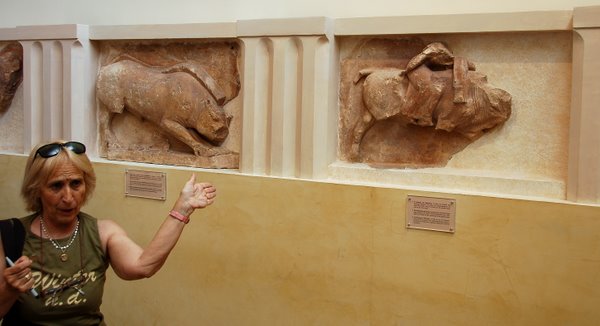 |
Rena, our tour guide, made a big point of drawing our attention to this popular image of a woman on a bull.(Anyone recall anything in Revelation about a woman riding a beast?) |
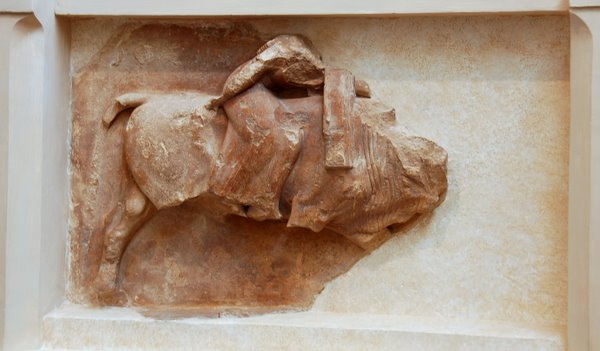 |
Here’s a closeup. Europeans liked this image so much that it’s on the backs of some 2 Euro coins. |
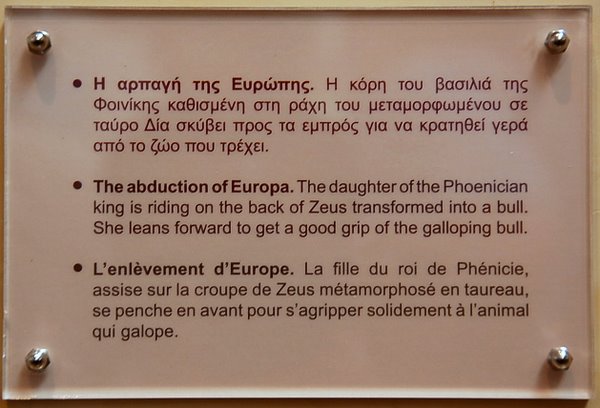 |
|
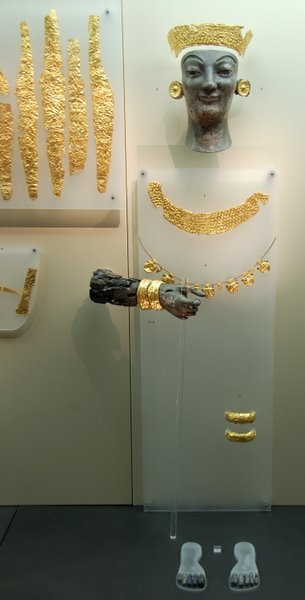 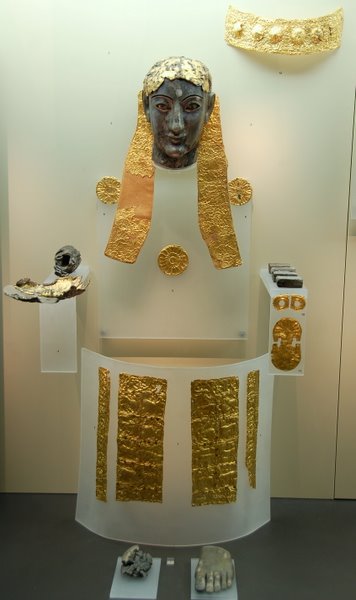 |
I forget who these guys are. Probably a king and queen. |
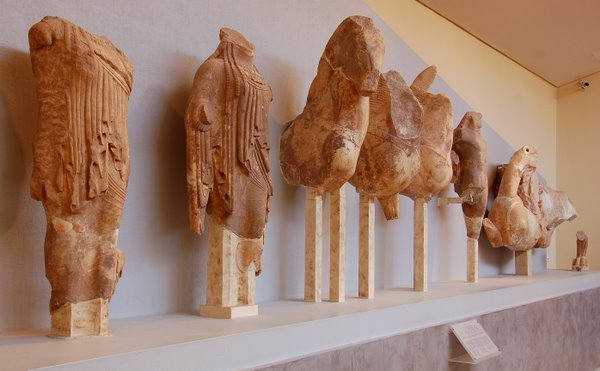 |
|
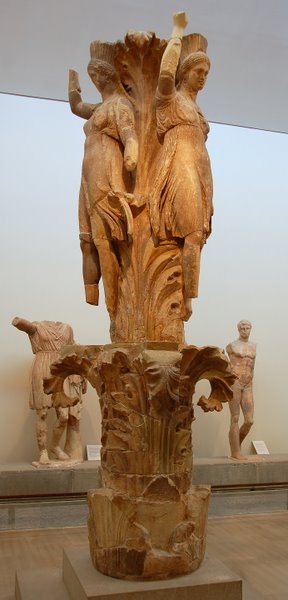 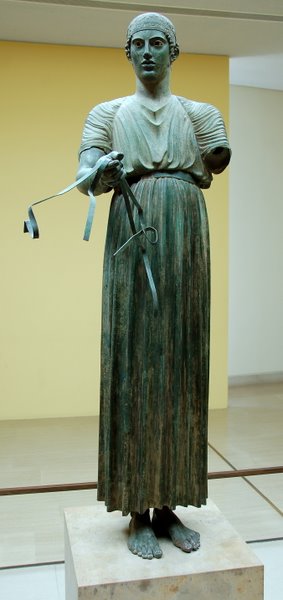 |
The one on the right is a 6′ statue of a charioteer from 470BC – most probably a chariot driver in the Pythian Games. (doesn’t look like a charioteer to me). Little did I know it was the highlight of the museum tour!The “Charioteer of Delphi” is one of the best known ancient Greek statues, and one of the best preserved examples of classical bronze casts. It is considered a fine example of the “Severe” style.
The sculpture depicts the driver of the chariot race at the moment when he presents his chariot and horses to the spectators in recognition of his victory. Despite the severity of the moment, the youth’s demeanor encapsulates the moment of glory, and the recognition of his eternal athletic and moral stature, with abundant humility. The Charioteer of Delphi is one of the most important sculptures of ancient Greece partly because it vividly represents the passage from the Archaic conventions to the Classical ideals. It exemplifies the balance between stylized geometric representation and idealized realism, thus capturing the moment in history when western civilization leaped forward to define its own foundations that braced it for the next few millennia. – www.ancient-greece.org |
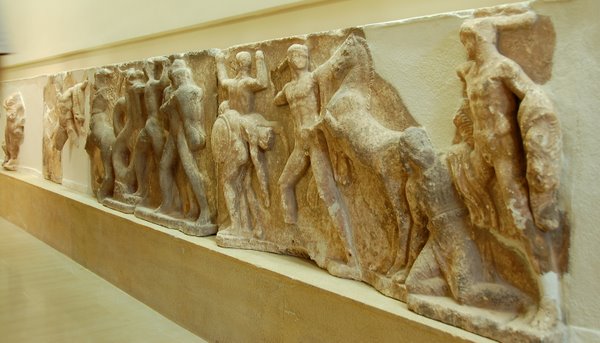 |
I think these are all part of the Treasury of Siphnos. Judging by their artwork, one could easily think Greeks do everything in the buff. |
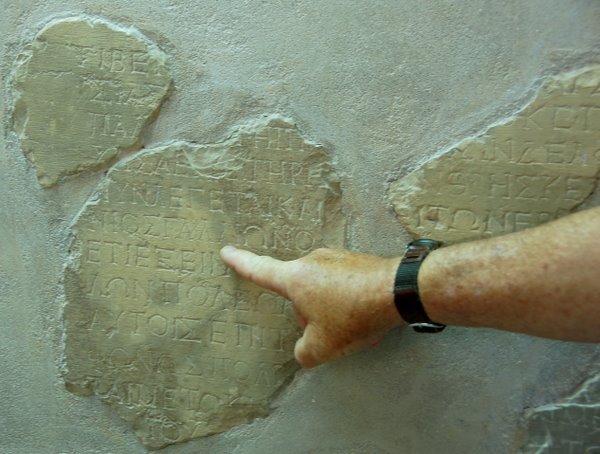 –  |
Dr. Dave is pointing to the name “Lucius Junius Gallio”. |
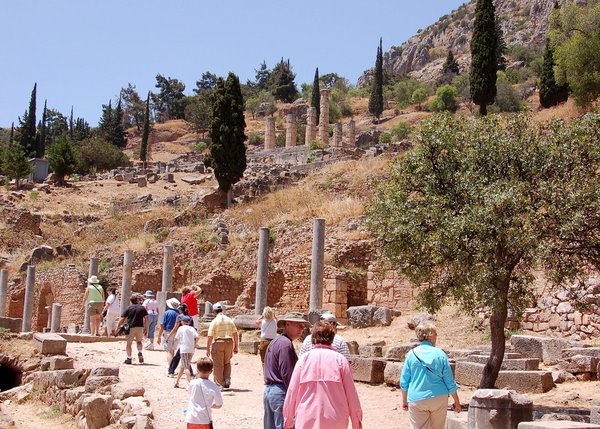 |
If you walk outside the museum and head to the east, you come to the ancient ruins of Delphi. It’s a lot bigger than I thought it would be. ..and we didn’t even make it to the top where the Oracle sniffed the gas. |
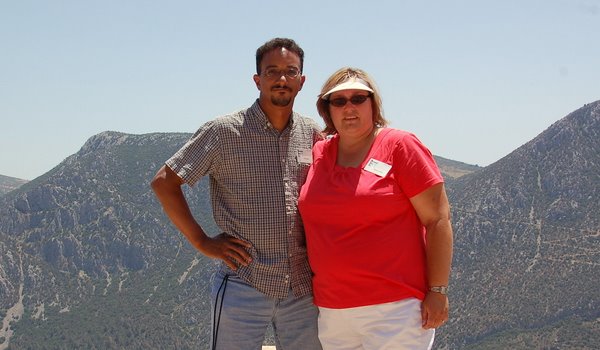 |
|
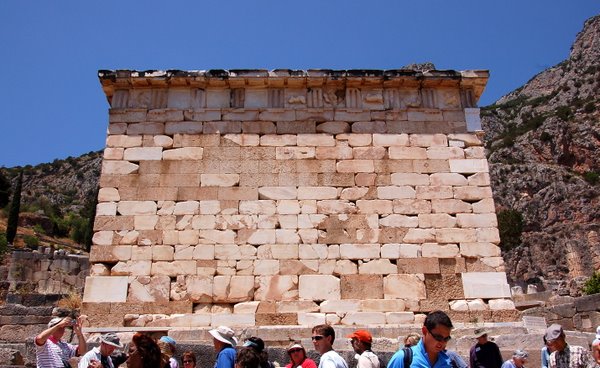 |
|
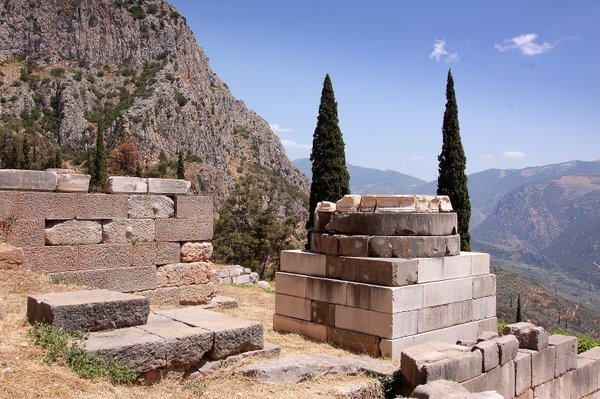 |
|
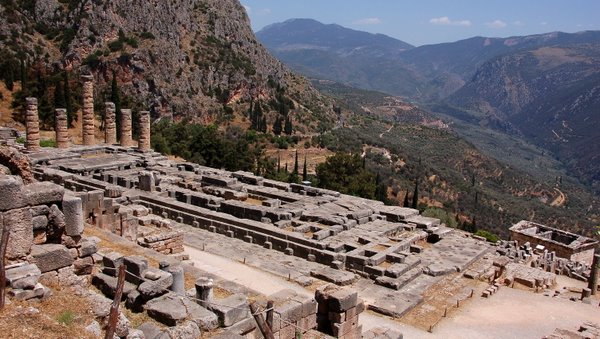 |
Sanctuary of Apollo, with the Treasury of Athens on the far right. In the distance (center) is the Shrine of Athena Pronaia. There’s a highway separating the Shrine of Athena Pronaia from the rest of the ancient city. We didn’t go there. |
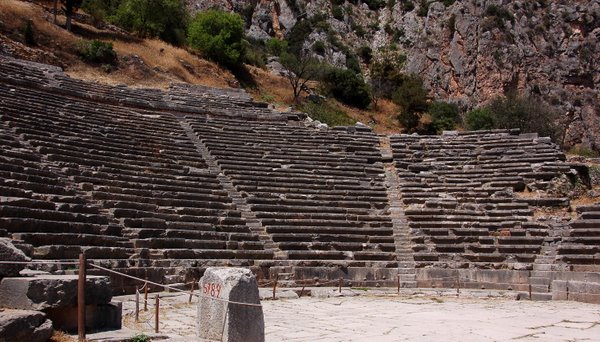 |
The stadium. |
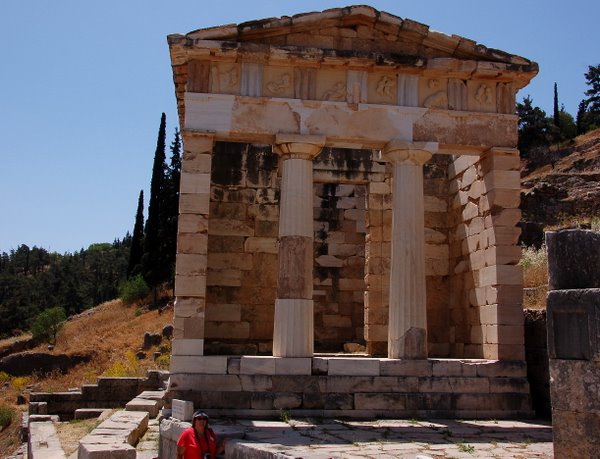 |
The Treasury of Athens, built to commemorate their victory at the Battle of Marathon. |
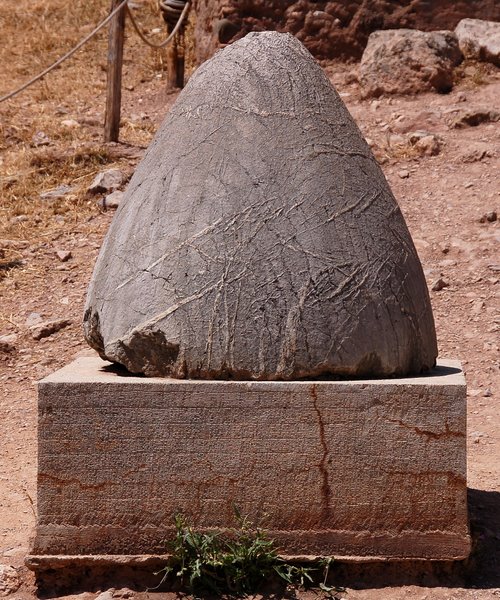 |
This is the stone that sat on top of the fissure that the Oracle of Delphi inhaled at. |
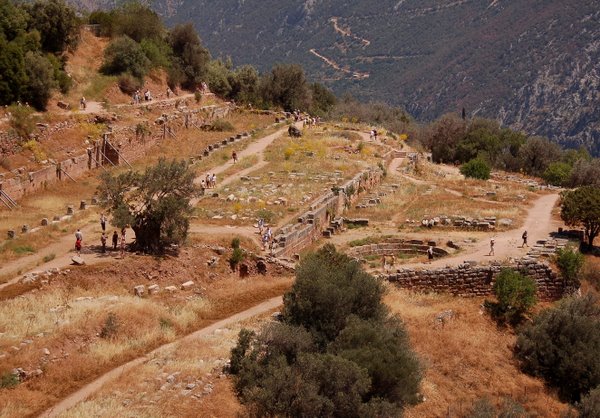 |
The Shrine of Athena Pronaia. If you want tons of info about it, check out www.goddess-athena.org. |
 |
|
| A video tour of Delphi, yanked off YouTube. |
Delphi
Delphi
<
